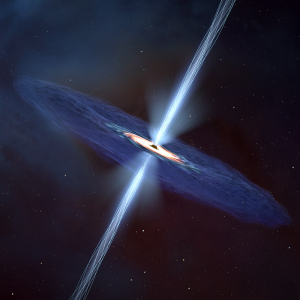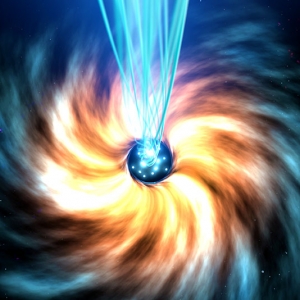Black holes have been fascinating subjects of study, not just because they are cosmic vacuum cleaners, but also as engines of immense power capable of extracting and redistributing energy on a staggering scale. These dark giants are often surrounded by swirling disks of gas and dust, known as accretion disks. When these disks are strongly magnetized, they can act like galactic power plants, extracting energy from the black hole’s spin in a process known as the Blandford-Znajek (BZ) effect.
While scientists have theorized that the BZ effect is the primary mechanism in the energy extraction process, many unknowns remain, like what determines how much energy is funneled into powerful jets—powerful streams of particles and energy ejected along the black hole's poles—or dissipated as heat.
To answer these questions, JILA postdoctoral researcher Prasun Dhang, and JILA Fellows and University of Colorado Boulder Astrophysical and Planetary Sciences professors Mitch Begelman and Jason Dexter, turned to advanced computer simulations. By modeling black holes surrounded by thin, highly magnetized accretion disks, they sought to uncover the underlying physics that drives these enigmatic systems. Their findings, published in The Astrophysical Journal, offer crucial insights into the complex physics around black holes and could redefine how we understand their role in shaping galaxies.








